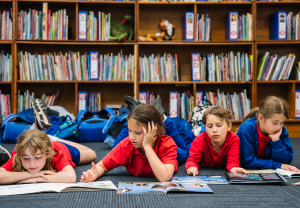Sleep and rest in outside school hours care
- Home
- Latest news
- We hear you
- Sleep and rest in outside school hours care
From 1 October 2023 new legislative requirements commenced for sleep and rest.

In accordance with these changes, all approved services under the National Quality Framework (NQF) are required to conduct a sleep and risk assessment at least once every 12 months.
Even if you do not have children or young people who regularly sleep in your service, new sleep and rest legislation still applies, including to outside school hours care (OSHC) services. OSHC services, like all services approved under the NQF, must take reasonable steps to ensure that the needs for sleep and rest of children and young people are met, having regard to their ages, developmental stages and individual needs. (Regulation 84A).
Rest and relaxation in OSHC services
Although most children and young people attending OSHC may not need or choose to sleep, educators need to consider how they can support them if they decide to do so. They also need to think about how to accommodate each individual's rest and relaxation needs. As children and young people enrolled in OSHC services attend before or after primary school or in vacation periods, they may need or wish to access rest or relaxation experiences to help them feel settled and comfortable in the service environment.
Other common circumstances where sleep and rest may occur in OSHC services could be:
- young kindergarten age children who may be attending OSHC services for the first time and are still adjusting to a formalised school routine and may be tired or overstimulated
- children and young people who become unwell at the service and need a space to sleep, rest or relax whilst families arrange collection
- children who are spending long days in vacation care programs and may choose to rest in a quiet place away from the larger group
- hot weather days where children may like a cool and quiet place to engage in sleep or rest
- children or young people who have returned from an excursion and are feeling exhausted, tired, or overstimulated
- children with additional needs or medical conditions who require more frequent sleep and rest.
What does rest and relaxation look like?
The physical environment should be flexible to provide opportunities for rest and relaxation throughout the day as needed, ensuring that the wellbeing of children and young people is being supported. Wellbeing includes meeting children's needs and rights to physical health, fitness, play, leisure, sleep and rest. This balance can be achieved by educators providing a range of active and restful experiences throughout the day to support each child’s individual requirements.
OSHC services should consider how they ensure comfortable spaces are being made available for children away from the main activity area to rest and engage in relaxation. Some strategies to support this could be educators:
- demonstrating awareness of children’s comfort and avoiding overcrowding when children and young people are trying to rest and relax
- providing a range of active and restful experiences throughout the program and supporting children’s preferences for participation
- negotiating arrangements for relaxation and ‘downtime’ with children and young people, collaborating with them to see what would best meet their personal preferences and needs.
Sleep and rest risk assessments
Completing risk assessment and management plans is an ongoing part of good operational practice and ensures the safety, health and wellbeing of children. This includes the new requirement to conduct a sleep and rest risk assessment at least once every 12 months and, as soon as practicable, after becoming aware of any circumstance that may affect the safety, health and wellbeing of children during sleep and rest.
For OSHC services, some things to consider in a risk assessment may be:
- the location of the sleep and rest areas. For example, how are children provided with safe and quiet areas for them to sleep or rest, whilst also having a regard for adequate supervision?
- the safety and suitability of any equipment used for sleep and rest, regarding the ages and developmental stages of the children who will use them. For example, assessing the risk of soft cushions or bean bags for the purpose of sleep and rest
- sleep during the transportation of children, for example in private or public transportation.
ACECQA has developed a risk assessment template designed to assist approved providers and service leaders in conducting sleep and rest risk assessments. This template is a starting point and should be adapted to meet the individual needs of your service in line with regulations 84A, 84B and 84C.